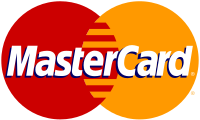Here’s How to Improve Your Business’s Content Marketing
Content marketing is the only type of marketing that doesn’t cost anything. What’s more? It’s as profitable a marketing strategy as paid search advertising or paid social marketing. Below are some pointers to help you decide whether to invest your resources in content marketing and guide you through building a successful content marketing campaign that’ll get results.
What’s the purpose of your content?
You’ve probably heard many times the importance of keeping a blog and creating social content. Assessing the necessity is the first step to a good content marketing campaign. Does it align with your business model? Do you have the resources for the upkeep of a blog site? Content marketing is a lot of work. If you don’t see how content marketing can serve you, or if you don’t have the means to update the blog periodically, now is not the right time to launch content marketing.
If content marketing serves your business model and you have the resources to run the blog, ask yourself this next: What’s your goal? In other words, what are you trying to accomplish with a content marketing campaign?
For an e-commerce website, the obvious goal is to increase the conversion rate by producing highly convertible content. Ecommerce conversion rate refers to the percentage of website visitors who make a purchase on the site.
The conversion rate in a broader sense refers to the percentage of users who take a calculated move. It could be based on a number of indicators, such as the percentage of people who filled out and submitted the contact form, or the percentage of people who RSVP’d to the webinar series.
Know your keywords
Identify keywords and do a deep dive with tools like Google Keyword Planner, Ahrefs, and Moz. What do you know about the client demographics, and what does that tell you about the kind of content you should produce? Put yourself in your customers’ shoes. What are the keywords and phrases they’d type into a search engine in the hopes to find a service like yours?
Once you’ve identified the keywords, scratch your customers’ itch. What would they like to know about your products before making a purchase? Do a thorough review of your products and share glowing reviews from influencers and bloggers.
Search optimize to rank on top
When a customer searches for your product or service, you want to be visible on the Search Engine Results Page (SERP). Ideally, you want to rank on the first page, and high on top of the page. The first two to three links on top with the “Ad” signs are links being advertised viapaid search marketing. The goal is to rank in the top five under the ad links on the SERP.
Consider aiming for long-tail keywords for effective Search Engine Optimization (SEO). With so many contents available on the web, it’s almost impossible to rank well for a single keyword. Producing content with long-tail keywords has the added benefit of strengthening the main keyword of your blog site. For example, let’s say you run a business selling bathrobes. Instead of only targeting the “bathrobes” keyword, you’d create multiple articles targeting long-tail keywords such as “100 percent Egyptian cotton bathrobes,” “hotel quality bathrobes,” “bestselling bathrobes on Amazon” and so on.
Promote on social media
Your content must be shareable on social as well as discoverable on search engines. Depending on your content type and topic, you might find more success in one channel than the other. The truth is, some articles spread like wildfire on social media.
Choose the right type of social media for your content. If you write articles on topics that are considered shareable on social media, you’ll do well on social link building on networks like Facebook and Twitter. If you produce quality images, Instagram and Pinterest are good networks to build a following and attract users to visit your site.
Fine-tune for continued success
Google Analytics is a free tool that tracks and reports website traffic. It shows the most visited pages on your website so that you know which page optimizations to prioritize.
For an e-commerce website, you can review the conversion rate for each of your articles. You can browse the articles in a given data range or list the articles covering a specific topic to measure the success of your strategies.
Working with data is all about being consistent. Find an analytics tool that best suits your needs, and keep a habit of recording your data on a weekly basis.
Source: entrepreneur.com




